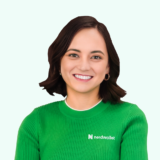North American Airlines Made $16.5 Billion in Fees Last Year
For a certain kind of traveler, here's why that might be a good thing.

Many or all of the products on this page are from partners who compensate us when you click to or take an action on their website, but this does not influence our evaluations or ratings. Our opinions are our own.
Does it feel like airlines are charging for everything these days? There are extra fees for checked bags, in-flight meals, Wi-Fi, early boarding and even seat selection. Your cheap flight can jump in price significantly once you pay for a suitcase in the overhead compartment and a seat in the exit row.
The fees that customers are paying for extra amenities are adding up for airlines. Airlines in North America made an estimated $16.5 billion in “a la carte” revenue last year. That’s double the $8.2 billion that airlines made in a la carte revenue in 2014, according to IdeaWorksCompany.
Despite the hassle of paying the ancillary charges, IdeaWorksCompany argues that this source of revenue is actually good for both consumers and the airline industry. It gives travelers the ability to choose a trip price that works for them. The difference in price for basic economy fares can sometimes make it possible to book flights that travelers wouldn’t have been able to afford otherwise.
» Learn more: Airline credit cards that offer free checked bags
The airlines that made the most money from these fees are the big players: American, United and Delta. These legacy carriers have embraced a strategy that was originally associated with low-cost carriers: think airlines like Wow Air, Eurowings and Norwegian. Now, some U.S. airlines have caught on to the “basic economy” trend. Several major American carriers are now encouraging customers to pay extra to upgrade to standard economy, which gives more flexibility in seat selection and sometimes more bags in the cabin. JetBlue, Hawaiian and Alaska Airlines all announced new basic economy or saver fares in 2018.
One notable exception, Southwest Airlines, is bucking the trend of basic economy. (CEO Gary Kelly said on an earnings call earlier this year, “That’s not what we do.”) On Twitter, the airline called it “Basic Compassion” not to charge for checked bags or flight changes.
» Learn More: Find the best airline credit card for you
A la carte revenue is also making up a larger portion of airline revenue. In North America, all of those added fees accounted for about 7% of operating revenue in 2018. The a la carte revenue stream makes it easier for airlines to withstand changes to fuel prices and other fluctuations in the market, which means more airlines can stay in business and the competition for customers can continue to drive down costs.
According to the Department of Transportation, the average domestic airfare in the second quarter of 2018 was $349.17, compared to $393.06 in 2014. Accounting for inflation, the average airfare five years ago is closer to $416.91 in today's dollars. The decrease in fares is good news for travelers, and a la carte fees have contributed to that.
How to maximize your rewards
You want a travel credit card that prioritizes what’s important to you. Here are some of the best travel credit cards of 2025:
Flexibility, point transfers and a large bonus: Chase Sapphire Preferred® Card
No annual fee: Wells Fargo Autograph® Card
Flat-rate travel rewards: Capital One Venture Rewards Credit Card
Bonus travel rewards and high-end perks: Chase Sapphire Reserve®
Luxury perks: The Platinum Card® from American Express
Business travelers: Ink Business Preferred® Credit Card




